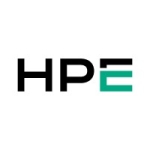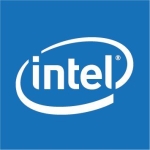The DL380 G7
Server is dual socket, 2U rack server.
Up to Two
Intel’s Xeon 5500 or 5600 series processors are supported in this system for up
to 12 cores.
A
maximum of 18 DIMMs with dual CPUs can support either 384 GBs of RDIMMs , or a maximum of
12 slots for 48 GBs of UDIMMs.
Depending
on the processor, this server supports memory speeds of up to 1333MHz

For hard
drives, you can use up to 8 hot-plug SFF drives or 16 SFF hot-plug SATA, SSD,or
SAS drives.
For storage options, you can use HP’s Integrated Smart Array
P410i for RAID 0, 1 or 1+0. Higher levels of RAID are supported with cache
modules of 256 or 512MB battery backed cache or with 512MB or 1GB flash backed
cache. Add an Advanced Pack License to activate RAID 6 and 6+0 capabilities.
For internal and external storage options, you can choose
the P212 or P411 with 2 external x8 SAS ports, or the P812 with 4 ports.
On the front of the DL380 is the power on button, USB ports,
optional optical drive depending on your configuration, VGA connection, and system
insight display.
On the back of the server are your redundant power supplies,
2 USB connections, VGA, dedicated iLO connection, serial port, quad port LAN,
and PS2 connectors.
There are 3 different out put options for power supplies,
either a 460W, 750W, or 1200W common slot hot plug power supplies that can be
used across a variety of HP Proliant G6 and G7 servers.
A primary PCIe Riser offers 3 on board PCIe gen 2 slots of X16
wired x8 full-length full-height
And two X8 wired x4 half-length, full-height slots.
Optional primary and secondary PCIe or X riser cards can be
installed for different expansion card configurations.
Various PCie cards can be installed including Infiniband
cards and Fusion IO drives.
Remote management is available with an Integrated Lights Out
(iLO) with Advanced License.
The DL380 G7 weighs around 48 to 60 lbs. and is 3.38”
tall…….17.54” wide…..and 27.25” deep with SFF drives.
Supported operating systems include Microsoft Windows
Server, Red Hat Enterprise Linux, SUSE Linux
Enterprise Server, Oracle Solaris, VMware, and Citrix
XenServer.
UPDATE: February 16th, 2016.
The ROI on this server is increasing because as the price drops, it's capabilities for handling intense workloads is increasing!
Disclosure: My company does not have a business relationship with this vendor other than being a customer.












Mr. Radu,
Thank you for the compliment on the ML370 G4 review video!
The Hp ML370 G4 is compatible with these operating systems
Microsoft Windows Server 2008 Essential Business
Microsoft Windows Server 2008 Small Business
Microsoft Windows Server 2008 W32
Microsoft Windows Server 2008 x64
Please note "R2" is not listed.
Thanks for your question and thank you for watching!
Sincerely,
Chris Rodinis
IT Creations
818 975 3102